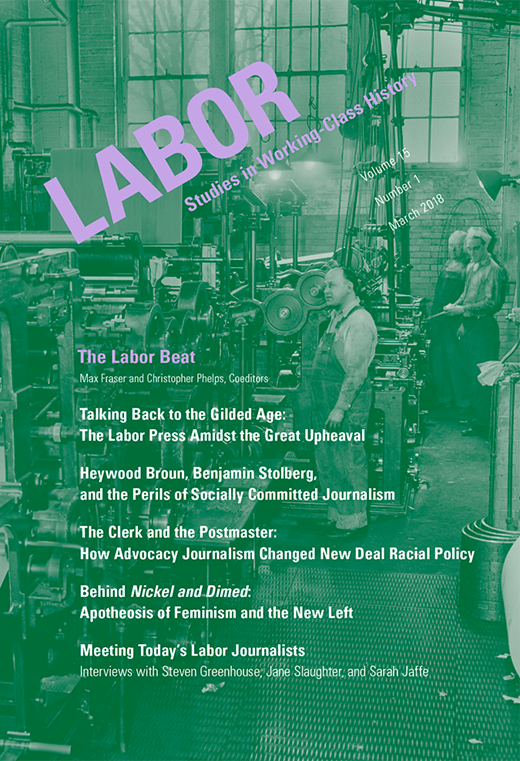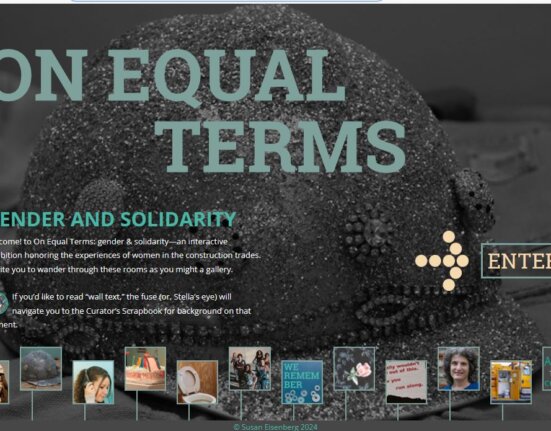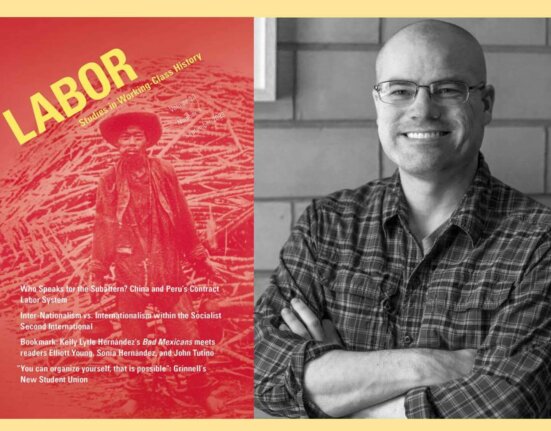In This Issue
Guest Editors’ Introduction
- Max Fraser, Christopher Phelps, The Labor Beat: An Introduction
The Common Verse
- E. Nesbit, The Sick Journalist
LAWCHA Watch
- James N. Gregory, “LAWCHA Approaches Its Twentieth Anniversary“
Articles
- Kim Moody,”A Gilded-Age Social Media: John Swinton, Joseph Buchanan, and the Late Nineteenth-Century Labor Press”
The years following the Civil War saw the rise of a nationwide network of independent local weekly labor papers that exchanged news, economic analysis, political ideas, and labor market information. Although its roots may be traced back to the 1820s, the rapid growth of this press in the 1880s was propelled by the working-class upheaval of that decade. It was composed of scores of weekly labor-oriented newspapers and formed a social network within America’s new wage-earning class. Among its most influential journalists were John Swinton and Joseph Buchanan, who helped shape the combative labor journalism of the Gilded Age.
- William James Griffin, “News and Views of the Postal Service: Trezzvant W. Anderson and Black Labor Journalism in the New Deal Era”
Trezzvant W. Anderson (1906–63) was a railway postal clerk, labor activist, and newspaper correspondent who used crusading journalism to aid the larger struggle to end racial discrimination in the civil service. Anderson’s activism led President Franklin D. Roosevelt to sign Executive Order 8587, which ended the civil service employment application photograph requirements. Anderson’s advocacy journalism, centered upon union action and workplace justice, illustrates how the black press embraced employment issues and made them central to African American aspirations for racial equality in the New Deal era.
- Gabriel Winant, “The Making of Nickel and Dimed: Barbara Ehrenreich and the Exposé of Class in America”
This article examines the career of journalist and critic Barbara Ehrenreich. Born to a mining family, Ehrenreich’s experience of upward mobility formed the biographical context for her critique of professional ideology—a critique at the heart of her entire career. Her diagnosis of the New Left’s failure and the New Right’s triumph emerged from her analysis of the “professional-managerial class.” Her journalism amounted to an effort to translate across the cultural gulf between the proletariat and the professional class in which she counted herself a reluctant member. Her bestseller Nickel and Dimed was the culmination of this project.
- Max Fraser, Steven Greenhouse, Jane Slaughter, Sarah Jaffe, “Labor Journalism Today: Three Interviews”
In three separate interviews, special issue coeditor Max Fraser discusses the past, present, and future of labor journalism with three of today’s most widely read labor writers: Steven Greenhouse, formerly of the New York Times; Labor Notes’s Jane Slaughter; and freelance writer Sarah Jaffe. Together, they offer a unique perspective on the evolving political and economic landscape of the labor beat during recent decades, as labor’s long decline and the deteriorating fortunes of “traditional media” news outlets have combined to refashion the way writers cover work, class, and social change in American life.







